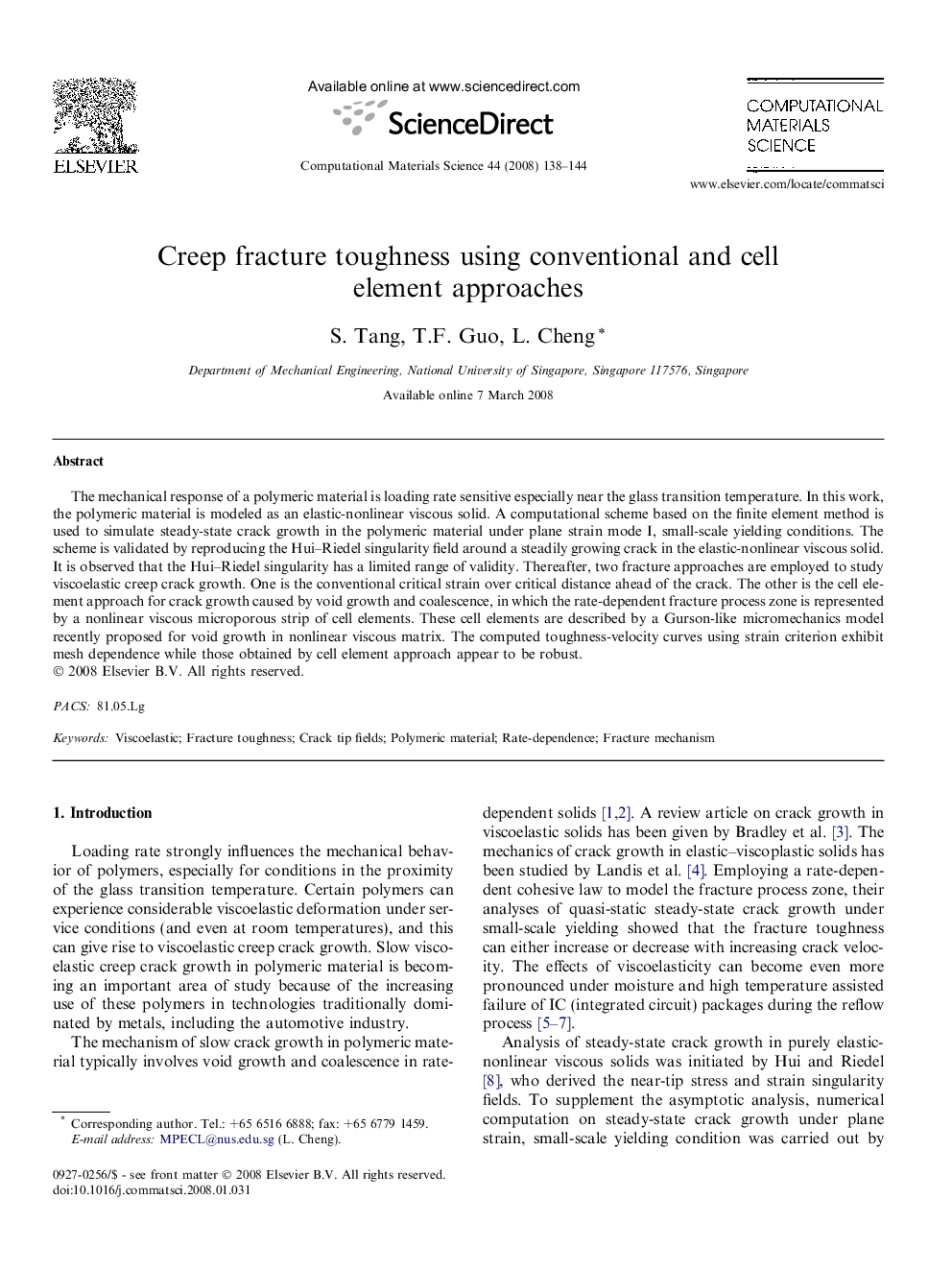| Article ID | Journal | Published Year | Pages | File Type |
|---|---|---|---|---|
| 10644546 | Computational Materials Science | 2008 | 7 Pages |
Abstract
The mechanical response of a polymeric material is loading rate sensitive especially near the glass transition temperature. In this work, the polymeric material is modeled as an elastic-nonlinear viscous solid. A computational scheme based on the finite element method is used to simulate steady-state crack growth in the polymeric material under plane strain mode I, small-scale yielding conditions. The scheme is validated by reproducing the Hui-Riedel singularity field around a steadily growing crack in the elastic-nonlinear viscous solid. It is observed that the Hui-Riedel singularity has a limited range of validity. Thereafter, two fracture approaches are employed to study viscoelastic creep crack growth. One is the conventional critical strain over critical distance ahead of the crack. The other is the cell element approach for crack growth caused by void growth and coalescence, in which the rate-dependent fracture process zone is represented by a nonlinear viscous microporous strip of cell elements. These cell elements are described by a Gurson-like micromechanics model recently proposed for void growth in nonlinear viscous matrix. The computed toughness-velocity curves using strain criterion exhibit mesh dependence while those obtained by cell element approach appear to be robust.
Keywords
Related Topics
Physical Sciences and Engineering
Engineering
Computational Mechanics
Authors
S. Tang, T.F. Guo, L. Cheng,
